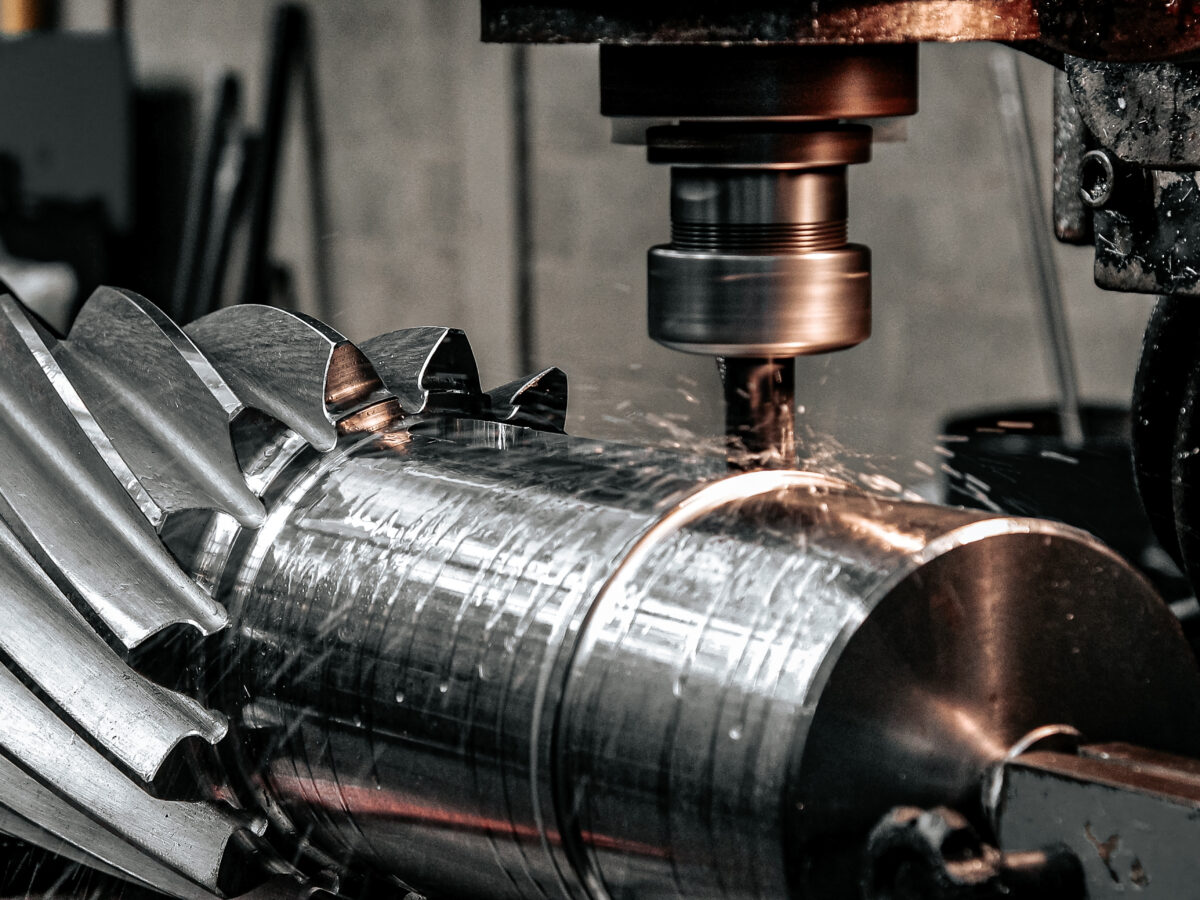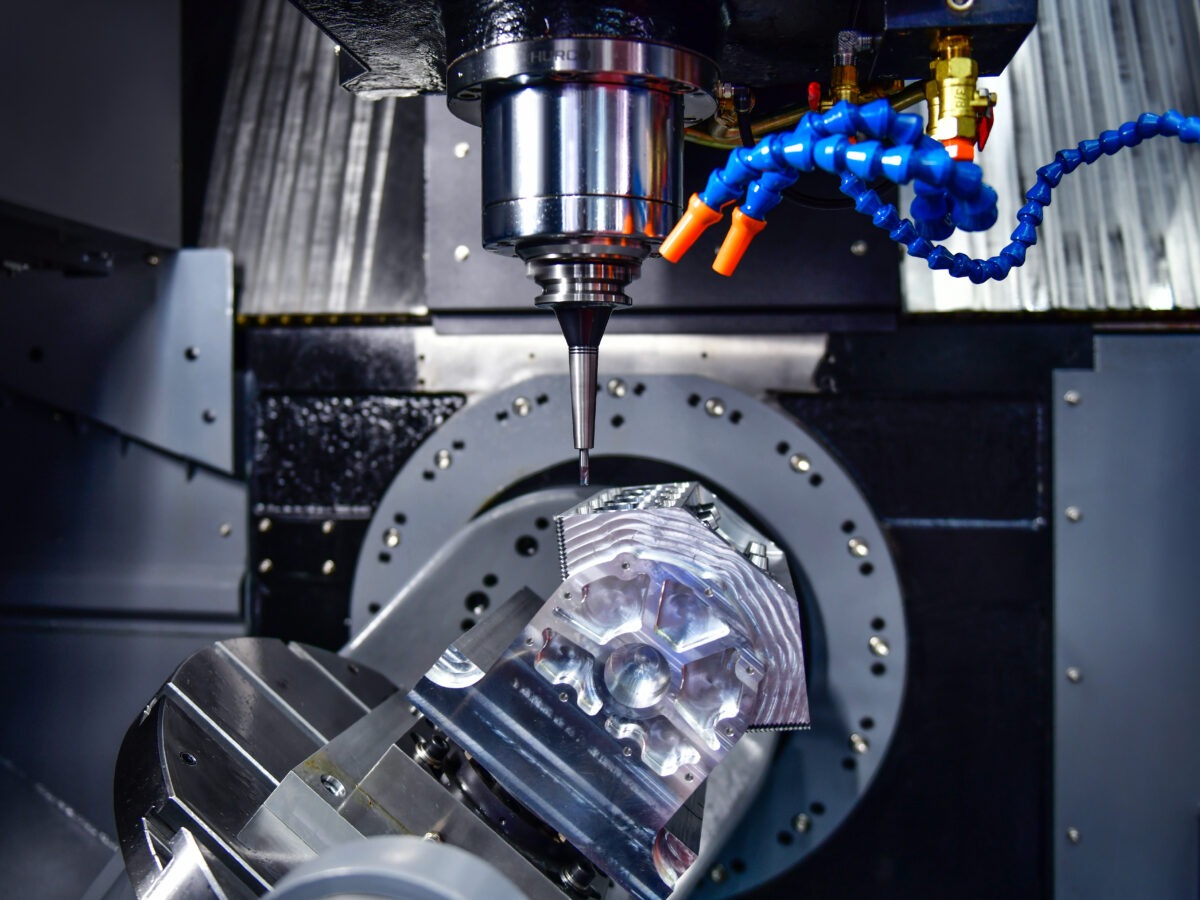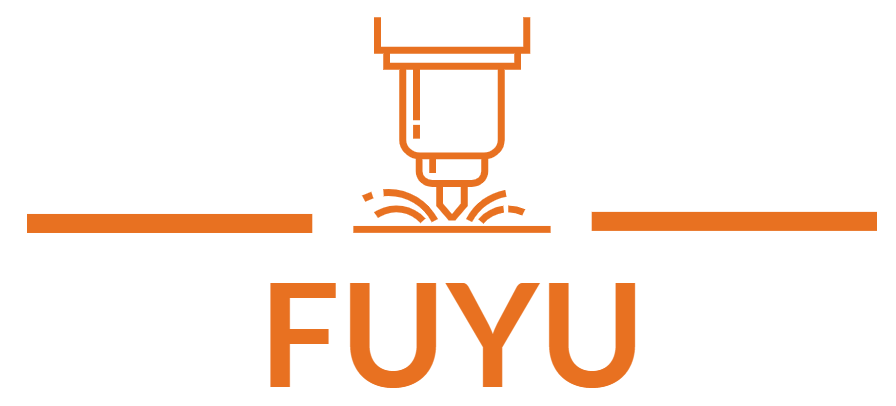Unlocking Precision: A Comprehensive Journey Through CNC Prototype Machining
Prototyping constitutes a pivotal phase in the product development lifecycle, serving to assess both the aesthetic and functional aspects of a design. The utilization of conventional machining methodologies for this undertaking is characterized by its exorbitant costs and protracted timelines. Conversely, the advent of CNC prototype machining has rendered the fabrication of prototypes economically viable and expeditious.
This discourse delves into the realm of prototype machining, scrutinizing diverse applications of CNC prototyping machining, as well as offering insights into pertinent considerations and procedural tips.
What Is CNC Prototype Machining?
CNC prototype machining is a method employed for the rapid generation of prototypes through the utilization of a CNC machine. Typically, the production volume remains limited, with the primary objective being the creation of a tangible and operational manifestation mirroring the envisioned final product. In essence, prototype machining serves as the conduit for assessing the physical manifestation of a digital design.
Through the avenue of prototype machining, manufacturers gain the advantage of identifying and rectifying design flaws prior to the initiation of extensive production runs. The eradication of defects during this pivotal juncture in the product development process significantly contributes to enhancing the cost-effectiveness of production.
What are the benefits of utilizing CNC machining in prototype production?
CNC machining stands out as the preferred method for prototyping due to several compelling reasons. Firstly, this approach ensures a superior level of accuracy and precision by leveraging computerized controls that meticulously oversee the movements of both the workpiece and the cutting tool. These automated controls meticulously consider every facet of your design, guaranteeing the faithful reproduction of the prototype.
Additionally, the swiftness of CNC machining adds another dimension to its suitability for prototyping. In stark contrast to methods such as injection molding, where waiting periods of several months are common for the preparation of tolerances and molds, CNC machining accelerates the prototyping timeline.
The CNC system’s efficacy in prototyping commences with the creation of a 3D CAD model representing the final product, subsequently converted into CAM files. These CAM files encapsulate the G Code, dictating the precise movements of the CNC machine throughout the prototyping fabrication process.
Various CNC Prototyping Operations
Manufacturers have access to a range of distinct CNC machining operations for prototyping, and the selection of a specific operation is often contingent upon factors such as design specifications and the materials employed.
Outlined below are prevalent CNC prototyping machining operations:

Milling:
This operation entails the creation of prototypes using a milling machine. The CNC milling process is subtractive, with the machine cutting materials from a workpiece to craft a CNC-milled prototype with diverse geometries. Equipped with multipoint cutting tools, the milling machine rotates, making sharp cuts of varying shapes and lengths on the workpiece.
The depth and nature of the cuts on the workpiece, as well as the axes utilized by the machine, are contingent upon the complexity of the design. To enhance cut precision, the milling machine incorporates additional axes, augmenting its maneuverability.
Turning:
This process involves fabricating prototypes using a turning machine equipped with a lathe tool. Particularly adept at creating detailed prototypes and final products with cylindrical features, the lathe cutting tool remains stationary while the workpiece rotates in close proximity.
Unlike the milling machine, the turning machine employs a single-point cutting tool to remove materials from a bar stock, producing cylindrical parts. CNC turning is well-suited for generating linear features on the prototype’s exterior, as well as slots, threads, and tapers on its interior surfaces.


Multi-axis Machining:
A highly versatile rapid prototyping operation, multi-axis machining is ideal for prototypes with intricate specifications, involving more axes than conventional operations. Machines are available in 4-axis, 5-axis, and up to 9-axis configurations.
The machine’s consideration of a higher number of axes correlates with its capacity to achieve elevated tolerances and handle challenging machining tasks.
Predominantly Employed Materials in CNC Prototype Machining
The ensuing list outlines some of the frequently utilized materials for this process:
Aluminum:
Aluminum stands as the foremost material choice, primarily owing to its characteristics such as lightweight composition, an excellent specific strength ratio, and facile machinability.
Brass:
Brass, a zinc-copper alloy, finds prevalent use in CNC machining due to its elevated strength, remarkable machinability, and resistance to corrosion. Common applications include the production of electrical components, plumbing fixtures, tools, and musical instruments.
Copper:
Renowned for its exceptional conductivity, copper is integral in the fabrication of electrical components. Additionally, it sees use in the manufacturing of cooking tools, plumbing fixtures, and electronic elements.
Steel:
As a versatile and robust material, steel finds widespread application in various CNC machining tools. Its common uses encompass the production of automotive units, machine components, and industrial equipment.
Titanium:
Titanium, characterized by its lightweight nature, corrosion resistance, and impressive specific strength ratio, is a sought-after metal. Moreover, it exhibits noteworthy heat resistance.
Guidelines for Optimal CNC Prototype Machining Material Selection
Define Application Requirements:
The inaugural step involves a comprehensive description of application requirements. Key considerations encompass the operating environment of the final product, the anticipated stress and load-bearing capacity, as well as specific functional needs.
Identify Necessary Material Properties:
Following the delineation of application needs, the subsequent phase entails pinpointing the requisite material properties. These may encompass strength, machinability, corrosion resistance, durability, and other pertinent factors tailored to the project’s unique demands.
Evaluate Material Choices:
Systematically assess diverse material options, conducting a comparative analysis of their characteristics, availability, and costs. This process aids in identifying the most fitting choice for the project based on the specified properties.
Scrutinize Machining Properties:
Thoroughly evaluate the machining characteristics of the chosen materials, taking into account factors such as machinability and the accessibility of techniques and tools for machining. Opt for a material that facilitates ease and efficiency in the machining process.
Address Finishing Requirements:
Consider any finishing needs, such as the desired surface finish or coating, and opt for a material capable of meeting those requirements. Certain materials may necessitate additional steps to achieve the desired surface characteristics.
Prototype and Test:
Following material selection, it is imperative to prototype and test the element to validate its adherence to functional and performance specifications. If adjustments are deemed necessary to enhance functionality or performance, make requisite modifications to the material or design.
Considerations and Recommendations for CNC Prototype Machining
Manufacturers leverage CNC prototyping as a reliable technique to validate the precision and adherence of parts before transitioning to large-scale production. If you are contemplating CNC prototyping for your design, the following tips can prove instrumental.
Simplify Prototype Complexity:
While a sophisticated design may appear enticing, it is generally not advisable. In CNC prototyping, heightened complexity often translates to elevated machining costs. Designs featuring multiple angles and undercuts necessitate more machine setup time, leading to prolonged development periods. Consequently, a complex layout results in increased product development costs and extended time-to-market.
Employ Default Tolerances:
Default tolerances, established through years of material-specific experience, are typically the most efficient approach. Tighter tolerances demand specialized cutting equipment and additional fixtures, escalating production expenses. It is prudent to entrust skilled manufacturers with the determination of the optimal tolerance level for your prototype.
Reflect Tool Geometry:
During CNC prototype machining, consideration of the axial properties of cutting equipment or machines is essential, given the rotational nature of machining processes. As most cutting tools are round with limited cutting lengths, the tool’s geometry significantly influences cutting operations.
Collaborate with Experienced CNC Prototype Machining Professionals:
Partnering with adept CNC prototyping professionals is crucial for streamlining processes and producing high-quality prototypes. These specialists adeptly navigate the geometric constraints inherent in the machining process to realize the desired prototype layout. Without skilled prototype producers, realizing the full benefits of CNC machining for prototype development would pose a formidable challenge.
Advantages of Utilizing CNC Machining for Prototypes
When contemplating whether to opt for the CNC process in the creation of prototypes, consider the following advantages associated with CNC machining:
Precision and Accuracy:
CNC machining facilitates the production of prototypes with exceptional precision, tight tolerances, and accuracy. This heightened precision is a result of the computerized control governing the movement of cutting tools. Any errors or flaws in the manufactured prototype typically originate from the design itself due to the inherently accurate machining process.
Cost Effectiveness:
Rapid prototyping with CNC occurs in single or small batches, allowing manufacturers to assess the product visually and functionally. Small batch production serves as a safeguard, protecting manufacturers or product developers from significant financial setbacks. Detecting defects during the assessment phase incurs minimal losses compared to discovering flaws after full-scale production.
Consistency and Repeatability:
CNC prototyping exhibits a high degree of repeatability, meaning that utilizing the same process and design for manufacturing a particular finished product will yield exact replicas. CNC machines provide consistent and precise imitations of the original design, irrespective of the number of copies produced. This differs from other prototyping processes, such as injection molding, where the mold depreciates after multiple repetitions, leading to subtle changes in the design.
Material Versatility:
CNC prototyping offers greater material versatility compared to other manufacturing and machining processes. It can machine various materials, including plastics (e.g., PS, LDPE, HDPE, PC, PP, PMMA, POM, PAGF, PCGF, ABS, and Teflon) and metals and metal alloys (e.g., aluminum, steel, stainless steel, magnesium, titanium, zinc, copper, bronze, and brass).
Time-Saving Process:
CNC machining is a time-saving process that eliminates the need for mold production and other prerequisites. Modifying designs is expedited, requiring adjustments to CAD and CAM files before producing the prototype again using the CNC machine.
Applications and Industries Utilizing CNC Prototype Machining
CNC Prototype machining stands as a versatile prototyping process widely embraced across diverse industries. While its application extends to nearly every sector, certain industries exhibit a heightened reliance on this process due to its unique advantages. Here are some of these industries:
Automotive Industry:
In the automotive sector, CNC prototype machining is indispensable for creating parts and models with stringent precision and tight tolerances. Components such as brakes, gears, suspension elements, and wheels demand ultra-tight tolerances to ensure the safety and functionality of vehicles. CNC prototype machining plays a crucial role in developing prototypes that consistently meet the desired specifications, facilitating thorough testing before mass production.
Military Industry:
The military industry, particularly in research and development (R&D), extensively employs CNC prototype machining. This technology is integral to the rapid production of warfare vehicles, aircraft, and various military parts. The ability to handle diverse materials makes CNC prototype machining an ideal choice for the military, allowing efficient and precise manufacturing processes for critical components.
Electronics Industry:
In the electronics sector, CNC prototype machining is crucial for developing precise and intricate components such as circuit boards, connectors, and housings. The technology’s ability to work with various materials, including metals and plastics, makes it invaluable for the production of electronic prototypes. CNC machining ensures the accurate reproduction of intricate designs, contributing to the advancement of electronic devices and systems.
Medical Industry:
The medical industry necessitates parts and equipment with microscopic precision, making CNC prototype machining a vital process. The industry benefits from the material versatility offered by CNC machining, accommodating the production of parts from both metal and plastics. With evolving medical technology, there is a growing demand for prototypes such as prosthetics, biopsy tubes, surgical instruments, and implant holders, all requiring the highest level of precision and accuracy.
Aerospace Industry:
The aerospace industry leverages CNC prototyping for precision manufacturing and performance testing. CNC machining is instrumental in developing aircraft parts like manifolds, bushings, and airfoils. The technology ensures the precise construction of components while allowing thorough testing of their functionality and performance, ensuring reliability during flight.
Comparison of CNC Machined Prototypes and Injection Molding Prototypes
While both types of prototypes serve the purpose of visually representing the final product, they differ significantly from one another. The following is a comparison between CNC machined prototypes and injection molding prototypes:
Part Tolerance:
• Injection molded prototypes typically exhibit part tolerances ranging from ±0.1 to 0.7mm. This relatively low tolerance level is attributed to the shrinkage that occurs after injection.
• In contrast, CNC machined prototypes boast an exceptionally high tolerance level of ±0.01mm, showcasing the precision and accuracy inherent in the machining process.
Prototype Material:
• Injection-molded prototypes are predominantly composed of plastics or elastomers, given the nature of the production process that involves injecting molten materials into a mold.
• Conversely, CNC machined prototypes can be crafted from a diverse range of materials, including wood, plastic, or metal, depending on the manufacturer’s material selection.
Surface Quality:
• Despite the precision of the injection molding process, prototypes produced may exhibit minor defects such as warping, sink marks, flow lines, weld lines, vacuum shots, short shots, and jetting. These defects can adversely affect the visual appearance of injection-molded prototypes.
• In contrast, CNC machined prototypes achieve a superior surface finish, attributed to the extensive tooling utilized throughout the machining process. This results in a more refined and visually appealing surface quality.
Comparison Between CNC Prototyping and 3D Printing
While both are prototyping processes, they significantly differ in method and the solutions they offer. Each process has its strengths, weaknesses, and ideal scenarios. For the purpose of this article, here is a comparison between CNC prototyping and 3D printing:
Material Consumption:
• In comparison to CNC prototype machining, 3D printing exhibits lower material waste. 3D printing utilizes only the necessary material during the manufacturing process, whereas CNC machining involves cutting excess material from a block to achieve the desired shape.
Prototyping Cost:
• CNC processes tend to be more expensive than 3D printing. This cost difference arises from the various accessories required for optimal CNC machine operation, including fixtures, cutting tools, and cutting fluid delivery systems.
• The substantial upfront cost of acquiring a CNC prototyping machine also contributes to the higher overall cost of prototypes produced through the machining process.
Supported Materials:
• CNC machining accommodates a wide range of materials, from wood and plastic to various metals and alloys. In contrast, 3D printing primarily supports thermoplastics due to their ease of heating and reforming.
Part Tolerance and Toughness:
• CNC machines boast a high tolerance level of ±0.01 mm, whereas advanced 3D printing technologies like DMLS (Direct Metal Laser Sintering) achieve a tolerance level of ±0.1 mm.
• Furthermore, CNC prototyping machines produce parts that exhibit greater toughness compared to those produced by 3D printing.
Fuyu Offers CNC Services For Rapid Prototyping
Fuyu provides CNC services for swift prototyping, harnessing cutting-edge technology and over 15 years of expertise in CNC prototyping. Our advanced capabilities empower us to seamlessly transform your CAD models into optimal prototypes. We offer comprehensive CNC machining services, ranging from precision prototyping to full-scale production runs.
Drawing upon our extensive machining experience across various industries, we specialize in crafting high-quality prototypes that align precisely with specified requirements. Simply upload your CAD files, and we will promptly deliver Design for Manufacturing (DFM) insights along with a detailed quote.
FAQs – CNC Prototype Machining by Fuyu
What materials are used for CNC prototypes?
• CNC prototypes employ a range of materials, including metals such as bronze, zinc, magnesium, titanium, copper, brass, stainless steel, and aluminum. Additionally, plastics like acrylic, ABS, PP, nylon, PC, Teflon, HDPE, LDPE, and PVC are suitable for CNC prototyping.
What factors impact the cost of CNC prototyping?
• Several factors influence the cost of CNC prototyping, including the complexity of the design, required tolerances, and the choice of material. Additionally, the type of CNC machine utilized and the selected surface finishing option contribute to the overall cost.
Are there alternative methods for prototyping besides CNC prototype machining?
• While CNC prototype machining stands out as a premier option for highly durable prototypes, alternative prototyping methods may be considered based on specific requirements. Factors such as material selection, desired structural robustness, and other criteria play a pivotal role in choosing the most suitable prototyping process.
Can Fuyu accommodate industry-specific prototyping needs?
• Yes, Fuyu’s extensive machining experience across various industries enables us to cater to diverse and industry-specific prototyping requirements. Our expertise ensures the production of high-quality prototypes tailored to the unique specifications of each industry.
What services does Fuyu provide beyond CNC prototyping?
• In addition to CNC prototyping machining, Fuyu offers expert one-stop CNC machining services, encompassing precision prototyping machining to complete production runs. Our cutting-edge technology and rich industry experience position us as a comprehensive solution provider for various machining needs.
Feel free to reach out to us with any further inquiries or to discuss your specific prototyping requirements!

